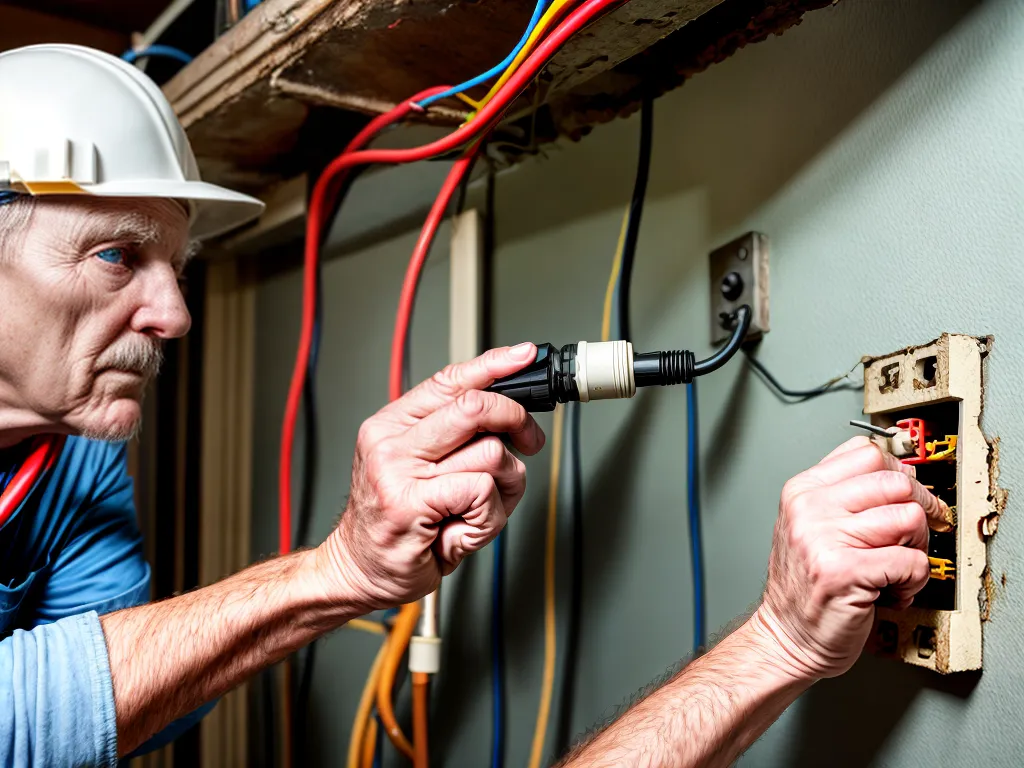
How to Safely Replace Knob and Tube Wiring in Old Homes
Introduction
Replacing knob and tube wiring in old homes can seem like a daunting task, but with proper precautions and planning, it can be done safely. Knob and tube wiring was commonly installed in homes built before 1950 and has largely been phased out due to safety concerns. While not inherently dangerous, knob and tube wiring lacks modern safety features like grounding and can be a fire hazard if damaged or overloaded. With some electrical know-how and help from a licensed electrician when needed, homeowners can upgrade old wiring and gain peace of mind.
Dangers of Knob and Tube Wiring
Knob and tube wiring consists of individual wires that are separated by ceramic knobs and run through wooden tubes or conduits. This type of wiring has the following safety issues:
-
No grounding - Knob and tube wires have no grounding path, increasing risk of shocks and making surge protectors ineffective. Grounded wiring provides a safe path for electricity to follow in the event of a fault.
-
Insulation deterioration - The rubber or cloth insulation around knob and tube wires becomes brittle over time, leading to cracks and exposed wires. This creates a fire hazard.
-
Overloading circuits - Knob and tube wiring was designed for lower electrical loads. Today's homes with more appliances can overload the system and cause wires to overheat.
-
Exposed splices - Spliced connections between wires are often uncovered in knob and tube systems, allowing sparks or arcs that can ignite fires.
Replacing knob and tube wiring eliminates these hazards by installing modern, grounded wire with up-to-date safety features.
Planning Your Wiring Replacement Project
Careful planning is required when tackling a full knob and tube rewiring project. Here are some key steps to take:
Consult an Electrician
Have a licensed electrician inspect your existing system for signs of damage, improper modifications, and overload. They can help devise a plan for replacement based on your home's needs.
Check Permit Requirements
Most areas require permits for extensive electrical work like full rewiring. Check with your local building department to ensure proper permits are obtained.
Design the New System
With the electrician, map out the new wiring system including the service panel size, number of circuits needed, and any re-routing required.
Develop a Budget
Factor in costs for the electrician's time, new wiring and panels, materials, permits, and inspections. Rewiring a whole home can easily cost $8,000 to $15,000.
Schedule Work in Phases
Rewiring a home section-by-section makes the process less disruptive. Discuss a phased schedule with your electrician.
Key Safety Tips for the Rewiring Process
When replacing knob and tube wiring, safety should be the top concern. Follow these tips to prevent hazards:
-
Turn off power at the main breaker before starting any work. Verify it is off using a non-contact voltage tester.
-
Only work on one circuit at a time. Label each circuit at the panel before disconnecting any wires.
-
Keep all wiring isolated from family members and pets while energized and uncovered.
-
Wear personal protective equipment like gloves and eye protection.
-
Use circuit tracers to locate hidden knob and tube wires in walls before cutting or drilling.
-
Hire a licensed electrician to handle the main service panel and complicated circuit rerouting.
-
Have the completed work inspected before re-energizing the system.
Installing New Grounded Wiring
Once safety preparations are made, the knob and tube wires can be replaced with modern Romex wiring:
Running Cables
Cables should be run through the walls horizontally and vertically between outlets and the service panel. Use cable staples to securely fasten the wiring every 4.5-5 feet along its run.
Splicing
Where new cables splice into existing wires, use twist-on wire connectors and wrap the connection in electrical tape for a secure join.
Outlets and Switches
Replace outdated two-prong outlets and switches with safe, grounded, three-prong versions. Install safety tamper-resistant outlets in areas where children may be present.
Grounding
Connect the ground wire in all new cables to the ground bus bar in the main service panel. Additionally, bond the ground wires to metal outlet boxes for extra protection.
Panel Upgrade
If necessary, upgrade the capacity of the main service panel to handle added circuits. Follow permit requirements and have an electrician complete this hazardous task.
Wrapping Up the Project
Once the new wiring system is installed completely, there are a few final steps:
-
Have the completed work thoroughly inspected by the local building department. Only flip the main breaker once it is approved.
-
Remove old knob and tube wiring if it is accessible. Any abandoned wires still in walls should be capped off.
-
Consider having an electrician install arc fault circuit interrupters (AFCIs) for added fire protection.
-
Confirm that all lighting, outlets, switches and appliances are functioning properly before wrapping up the project.
Replacing outdated and potentially dangerous knob and tube wiring requires significant effort and investment. But ultimately, having a modern, grounded wiring system makes your home much safer. By following proper safety precautions and utilizing a licensed electrician when appropriate, the project can be completed successfully.